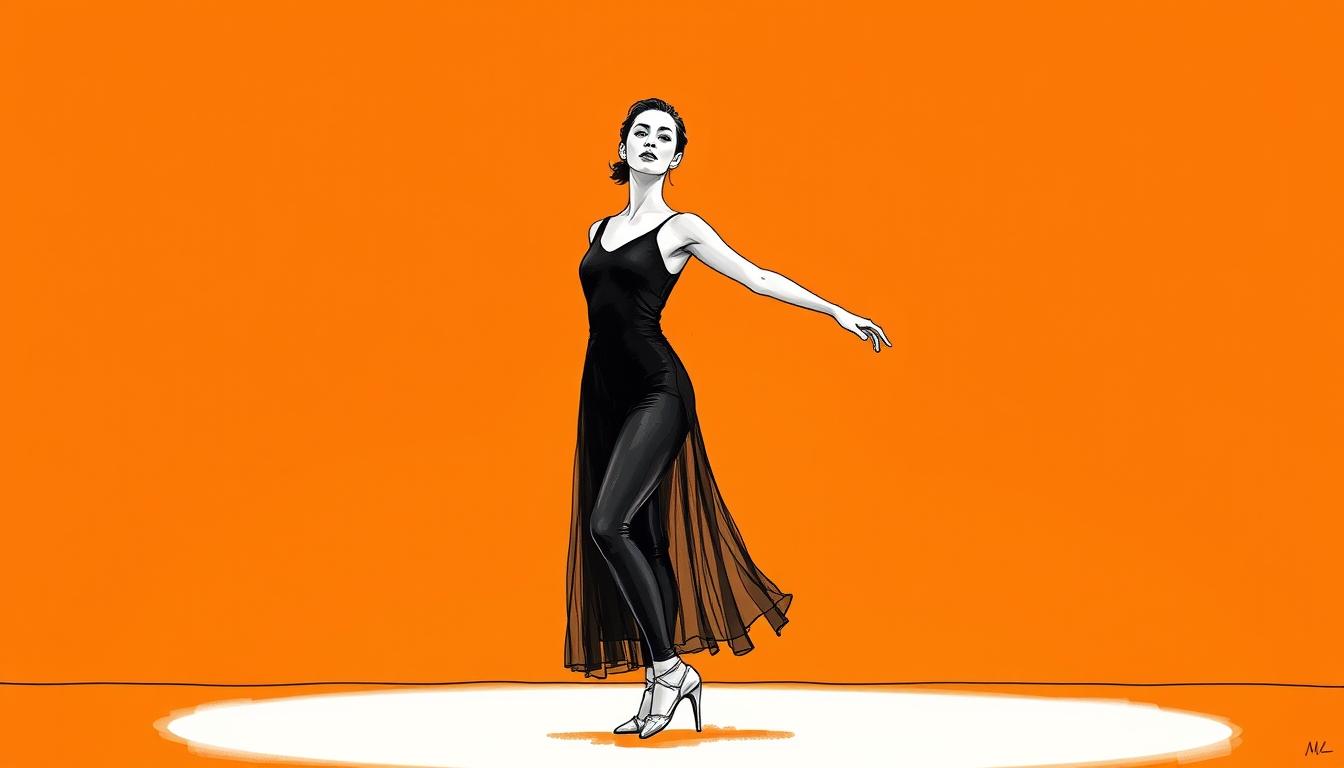She commands the stage with a presence built over decades. Her journey began at the heart of French dance.
At just sixteen, she entered the rigorous world of the Paris Opera. Every movement mattered in this demanding environment.
Her talent combined technical precision with deep emotional power. This blend defined her career in ballet.
The pinnacle arrived in December 1990. After a stunning performance as Kitri in Don Quixote, she was named étoile. This title marked her as a star among stars.
Her legacy extends beyond her own performances. She is a choreographer, director, and a respected voice on television, sharing her profound knowledge with new generations.
Marie-Claude Pietragalla set a standard for what it means to dedicate a life to art.
The Journey of a Ballet Maestro
Ballet mastery begins not on stage, but in the rigorous training rooms where futures are forged through repetition and resilience. The real work happens long before the curtain rises.
Marie-Claude Pietragalla entered the Paris Opera Ballet school as a teenager, immersing herself in a centuries-old method. She learned that ballet demanded complete dedication, rewarding only what was earned through sweat and precise execution.
Early Beginnings at Paris Opera
At sixteen, she graduated into the company itself. Student exercises gave way to professional performances where careers could pivot on a single night’s work.
The discipline shaped both body and mind. Every movement carried weight in this environment where critics watched closely.
Rise to Etoile and International Recognition
In 1984, an early signal arrived when she shared first prize at an international Paris competition. Her technique and artistry could compete with the world’s best.
Four years of relentless work brought the title of ballerina in 1988. Then came the pinnacle on December 22, 1990.
After a stunning performance as Kitri in Don Quixote, she was named étoile. This highest rank in French ballet recognizes those who transcend technical skill.
Rudolf Nureyev, directing the Paris Opera Ballet, recognized her unique qualities. He cast her in challenging roles that showcased both technical command and dramatic instinct.
National honors followed—Chevalier des Arts et Lettres in 1994, Officier de l’Ordre Nationale du Merite in 1997. Her contribution extended beyond entertainment into cultural significance.
Artistry, Choreography, and Captivating Performances
Her stage was a canvas for a century of dance, from classical precision to contemporary exploration. Marie-Claude Pietragalla refused to be confined to a single style.
She mastered the exacting works of Balanchine and Bournonville. Each step was a dialogue with tradition.
Iconic Performances and Signature Roles
Yet she constantly sought new challenges. She collaborated with groundbreaking choreographers like William Forsythe and Mats Ek.
Their work demanded a different kind of athleticism and psychological depth.
In 1992, she partnered with Patrick Dupond in “Swan Lake” at the Opéra Bastille. She captured the dual nature of Odette and Odile with stunning nuance.
Later, in Jean-Claude Gallotta’s “Les Variations d’Ulysse,” she proved her skill in abstract storytelling.
A pinnacle of her solo work came in 2000. Carolyn Carlson created “Don’t Look Back” specifically for her.
The piece stripped away all distraction, leaving only raw emotional truth on stage.
That same year, she also stepped into the role of choreographer with “Sakountala.” The ballet explored the turbulent inner world of sculptor Camille Claudel.
Her performances didn’t just execute steps. They interrogated the choreography, finding its emotional core and delivering it with unforgettable intensity.
Marie-Claude Pietragalla: A Legacy in Dance
In 1998, a prestigious appointment signaled a new chapter, moving from interpreting dance to defining it. Her artistic vision now faced the complex test of leadership.
Innovative Choreographic Works
Assuming the direction of the National Ballet of Marseille marked a bold shift. This role tested skills far beyond performance, blending creative ambition with institutional management.
That same year, the Prix Benois de la Danse honored her international impact. It confirmed her artistry spoke a universal language.
As a choreographer, she crafted distinct movement vocabularies. She set works to music by Hugues LeBars and Petru Gelfucci, exploring new sonic landscapes.
Her pieces like “Ni Dieu ni maître” translated anarchist poet Léo Ferré’s radical spirit into physical rebellion. In 2004, she founded the Pietragalla Company, claiming full artistic freedom.
Cultural Impact and International Collaborations
Her work consistently crossed boundaries. She choreographed “Enzo” for a popular music show at the Olympia, bringing dance to new audiences.
Collaborations with figures like Pierre Cardin resulted in ambitious productions. “Sade ou le théâtre des fous” premiered at the Marquis de Sade’s castle, fusing history and performance.
Works like “The Temptation of Eve” blended classical music with modern design. It became an ode to femininity that toured internationally, extending its reach far beyond Paris.
Reflections on the Life and Legacy of a Dance Icon
What defines a true dance icon isn’t just technical perfection, but the ability to reinvent oneself across decades. Marie-Claude Pietragalla moved through each phase—student, étoile, director, choreographer—with unwavering artistic integrity.
She proved that honoring classical tradition doesn’t mean being bound by it. Her work balanced reverence for ballet’s past with bold contemporary exploration.
Even television appearances became opportunities to educate. On Danse avec les Stars, she brought professional standards to popular entertainment without compromise.
Her legacy shows that artistry evolves when performance days fade. It lives in the example she set for generations to come.




